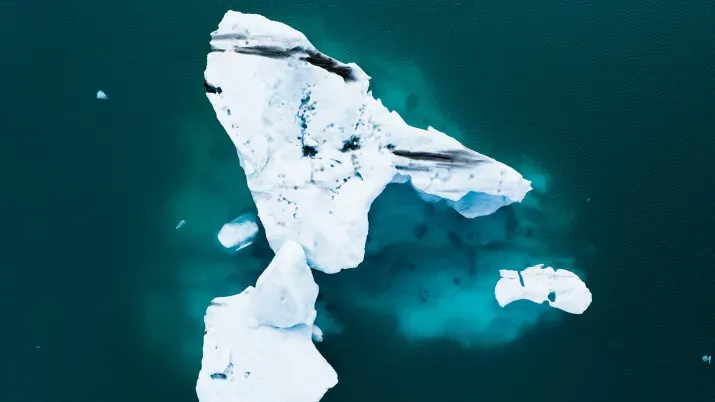Meeting sustainability and investor goals by supporting biodiversity
Conviction Equities Boutique
Key takeaways
- Reducing biodiversity loss can help meet the United Nations (UN) Sustainable Development Goals (SDGs) agenda and make progress towards targets related to water, land, marine life, health, and poverty.
- We believe urgent action should be taken in favor of natural ecosystems. Governments should adopt incentives to reward protection and conservation and penalize offenders. Biodiversity-centered incentives and solutions could prove beneficial for companies and investors with a long-term view.
- The Conference of the Parties (COP 15) to the Convention on Biological Diversity (CBD) is scheduled for December 2022, with 21 action targets for 2030, including: conservation and restoration of land and sea areas globally, among others.
- As investors, we would like to see progress on measuring and tracking the biodiversity footprint of a country, company and/or fund. At the Vontobel Conviction Equities Boutique, we aim to invest in companies that help improve our lives, minimize our ecological footprint, and perform financially.
Protecting ecosystems can help meet sustainability and investor goals
The decades-old lyrics by Joni Mitchell “…they paved paradise and put up a parking lot” could have been written today. Humans have increasingly consumed and disturbed the earth’s natural resources by clearing forests, overfishing oceans, and polluting water sources. Since 1970, when the folk singer wrote that hit song “Big Yellow Taxi,” global populations of mammals, fish, birds, reptiles, and amphibians have declined by an astounding 68%. A sharp rise in extinction among some species has also occurred.1
The impact of reducing biodiversity loss cannot be underestimated. Biodiversity is all life forms working together to develop an ecosystem that creates balance and supports life. It provides the natural sources for survival: food, clean water, medicine, and shelter. Beyond meeting those basic human needs, preserving and restoring ecosystems can make a profound contribution to meeting the United Nations (UN) Sustainable Development Goals (SDGs). And like the issue of climate change which has garnered worldwide attention, companies, investors, and society as a whole can benefit from biodiversity-centered solutions.
Can we put a number to it?
The importance of biodiversity is easy to understand, but not easy to measure. Some have tried and their conclusions are eye opening to say the least. The World Economic Forum and Swiss Re estimate the value of biodiversity to exceed US$40 trillion, i.e., roughly two times the GDP of the US and more than half of the world’s GDP.2 If this estimate is close to reality, it is obvious that damaging our natural capital would be foolish and costly in the long run. Along these lines, the Dasgupta review3 describes the hidden cost of liquidating natural capital assets as a constraint for long-term value creation.
From bees to mangrove: biodiversity as a multiplier for development
Studies have found that reducing biodiversity loss acts as a powerful multiplier across the entire UN SDGs agenda, considering benefits across goals and adverse trade-offs. Conversely, the current erosion of biodiversity and ecosystems is undermining progress towards 80% of SDG targets related to water, land, marine life, health, and poverty.4
For example, bees are considered central to the food system as 35% of global production of the food we eat relies on natural pollination. Between US$235 billion and US$577 billion in annual global crop output is at risk due to the loss of pollinators5. Their importance to achieve SDG 2 (zero hunger) is clear, to the point that some believe that their endangerment would threaten the human race. Similarly, soil health and quality are key for land fertility and crop yields. Yet, land degradation has already reduced the productivity of 23% of global land.6
Mangroves are a natural mitigating agent thanks to their ability to capture and store carbon (which contributes to SDG 13 – climate action), stabilize coastlines, and protect against tsunamis7 and coastal erosion. It is a similar situation for coral reefs. While the loss of coastal habitats and natural protection increases the risks caused by floods and hurricanes to life and property for the 100 million to 300 million people living within coastal 100-year flood zones8, protecting mangroves is an obvious choice.
Some coastal populations rely on fishing and/or tourism for their survival and the health and abundance of marine resources is key to avoid poverty, in-line with SDG 1 (no poverty). For rural populations in emerging markets, this is also a gender issue as it is mainly the women who rely on biodiversity resources / forest for income (while men have other jobs), which is important for SDG 5 (gender equality). Importantly, the UN explicitly sets the conservation and sustainable use of our oceans, rivers and seas, and the protection, restoration, and promotion of our forests as standalone objectives worthy of clear note: SDGs 14 (life below water) and 15 (life on land) respectively.
At the Vontobel Conviction Equities Boutique, we aim to invest in companies that help improve our lives, minimize our ecological footprint, and perform financially. The six impact pillars that drive our investment approach: clean water, lifecycle management, building technology, resource-efficient industry, low-emission transportation, and clean energy infrastructure can each be mapped to the SDGs.
Why are investors interested in biodiversity?
Some argue that biodiversity may be “the new climate”. This is because many of the SDGs can’t be achieved without preservation or restoration of biodiversity, including climate goals, which have already gained world attention. Hence, there is a need to take some urgent action in favor of natural ecosystems, and for governments to adopt incentives to reward protection and conservation and to penalize offenders. Political attention could lead companies to shift their strategies and allow EPS growth for the firms that have a hedge. We have seen it before with incentives for clean energy for instance, and this changed the name of the game for investors. If history repeats itself, biodiversity-centered solutions could be the place to put your money with a long-term view. By investing in problem-solving companies that focus on material improvements, reuse and recycling, and end of life/waste processing, investors can reduce biodiversity loss while potentially achieving long-term growth opportunities and strong financial returns.
Our wish list for COP15
In December 2022, the 15th meeting of the Conference of the Parties (COP 15) to the Convention on Biological Diversity (CBD) is scheduled to take place in Canada and China. The draft Post-2020 Global Biodiversity Framework set 21 action targets for 2030, including:9
- Conservation of at least 30% of land and sea areas globally.
- Restoration of at least 20% of degraded freshwater, marine and terrestrial ecosystems.
- 50% greater reduction in the rate of introduction of invasive alien species.
- Reduce nutrients lost to the environment by at least half, and pesticides by at least two thirds, and eliminate the discharge of plastic waste.
- Nature-based contributions to global climate change mitigation efforts of at least 10 gigatonnes of carbon dioxide equivalent per year.
As investors, we would like to see some progress on measuring and tracking the biodiversity footprint of countries, companies and thus funds and other financial products. The Mean Species Abundance (MSA) is likely to become the greenhouse gas (GHG) emission equivalent in terms of biodiversity footprint.10 However, it is hard to find MSA data at a corporate level and assign responsibilities and praises to specific human actions and actors. There are a substantial number of initiatives aimed at setting methodological standards and, eventually, reporting recommendations.11 Reconciling the differences might prove to be challenging. More top-down guidance and harmonization from COP15 would be helpful.
Moreover, we see that governments’ attention is currently focused on major geopolitical matters, energy risks, cost-of-living issues, food crises, and other important topics. In some cases, this has triggered a temporary setback for the policies in favor of organically farmed land (e.g., the EU’s 2030 Farm to Fork (F2F) strategy announced in May 202012). While we believe that tackling the food crisis is an urgent imperative, we hope that politicians will also acknowledge the role of nature-centric solutions and the importance of environmental planning, smart farming, organic fertilizers, plant-based diets, second-generation biofuels, waste management, and circular economy.
Here our team is proud to play their part. By identifying promising businesses that provide solutions in these areas and directing investment capital to them, investors can aim to reap a double dividend: attractive long-term returns, while also supporting biodiversity.
Important Information: Environmental, social and governance (“ESG”) and Sustainable investing and criteria employed may be subjective in nature. The considerations assessed as part of ESG and Sustainable processes may vary across types of investments and issuers and not every factor may be identified or considered for all investments. Information used to evaluate such components may vary across providers and issuers as these criteria are not uniformly defined characteristics. This investment approach may forego market opportunities available to strategies which do not utilize such criteria. There is no guarantee the criteria and techniques employed will be successful.
1. Source: https://www.worldwildlife.org/pages/what-is-biodiversity.
2. Research from the World Economic Forum in collaboration with PwC “shows that $44tn of economic value […] is moderately or highly dependent on nature and its services and is therefore exposed to nature loss” (Jan 2020). According to Swiss Re, 55% of 2018 global GDP (or US$41.7 trillion) depends on high-functioning Biodiversity and Ecosystem Services (BES).
3. The review lead by Professor Sir Partha Dasgupta on behalf of the UK Government: The Economics of Biodiversity, 2021 (
https://www.gov.uk/government/publications/final-report-the-economics-of-biodiversity-the-dasgupta-review
).
4. United Nations, Environmental Management Group, Supporting the global biodiversity agenda, 2020 (
https://unemg.org/wp-content/uploads/2021/04/EMG-Biodiversity-WEB.pdf
).
5. IPBES, Global Assessment Report on Biodiversity and Ecosystem Services, 2019 (
https://ipbes.net/global-assessment
). Often described as the “IPCC for biodiversity”, IPBES is an independent intergovernmental body comprising 139 member Governments. Value adjusted to 2015 United States dollars, taking into account inflation only.
6. IPBES, Global Assessment Report on Biodiversity and Ecosystem Services, 2019.
7. A strip of mangroves along the shore can reduce wave height substantially.
8. IPBES, Global Assessment Report on Biodiversity and Ecosystem Services, 2019.
9.
https://www.cbd.int/meetings/COP-15
10. It measures the average relative abundance of native species in an area, compared to their original abundance when the ecosystem is undisturbed. An MSA of 100% means that the ecosystem is undisturbed/pristine ecosystem.
11. Some of the most notable ones are the Task force for Nature Related Financial Disclosure (TNFD), the EU taxonomy, the Climate Disclosure Standards Board (CDSB), the Biodiversity Impact Analytics powered by the Global Biodiversity Score (BIA-GBS), and Corporate Biodiversity Footprint (CBF).
12. Sources: Politico, Brussels braces for ‘acrimonious’ fight over reducing pesticides, 8 Aug 2022 (
https://www.politico.eu/article/brussels-brace-acrimonious-fight-reducing-pesticide
/); FT, EU reviews sustainable food plans as Ukraine war disrupts imports, 20 March 2022 (
https://www.ft.com/content/f99d784c-0448-4552-ab8b-e77ed68ea173
).








